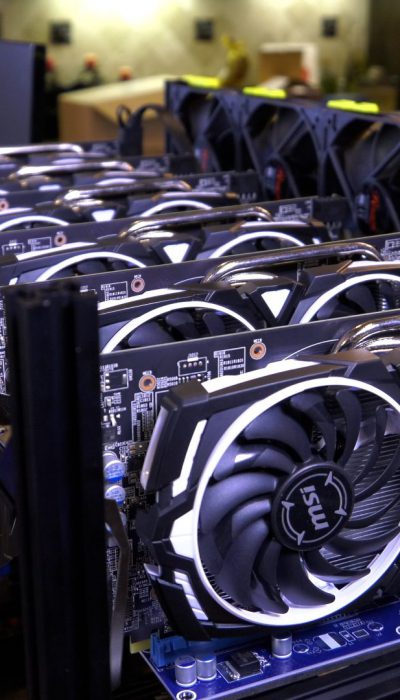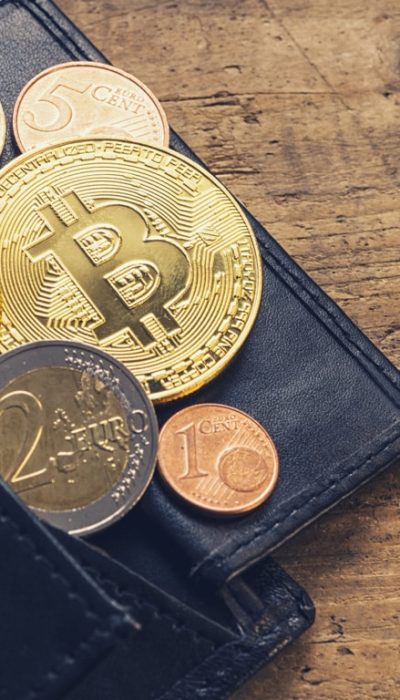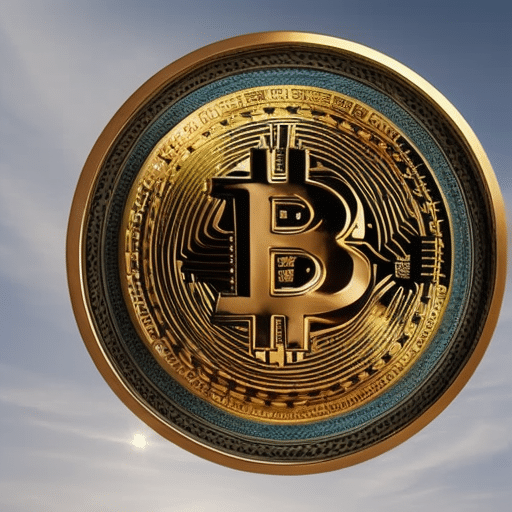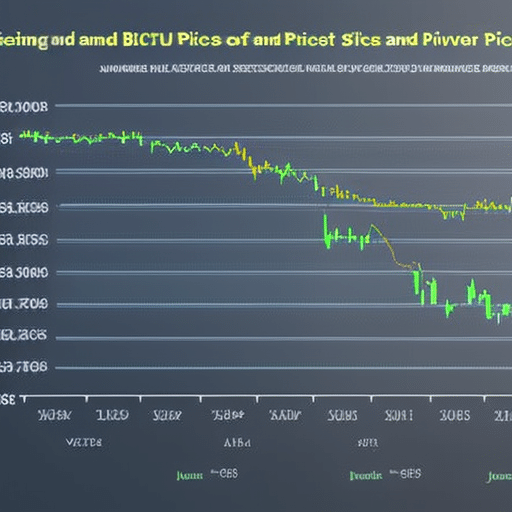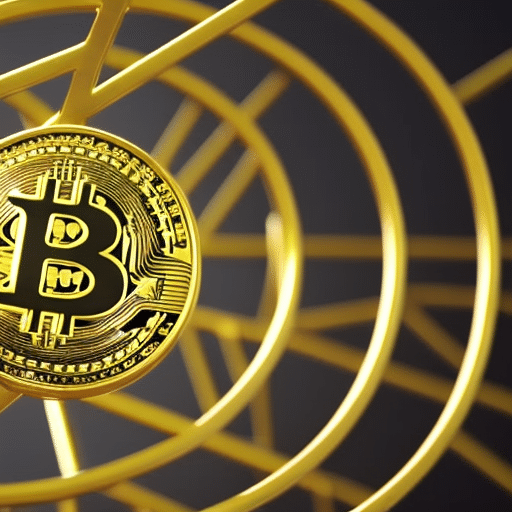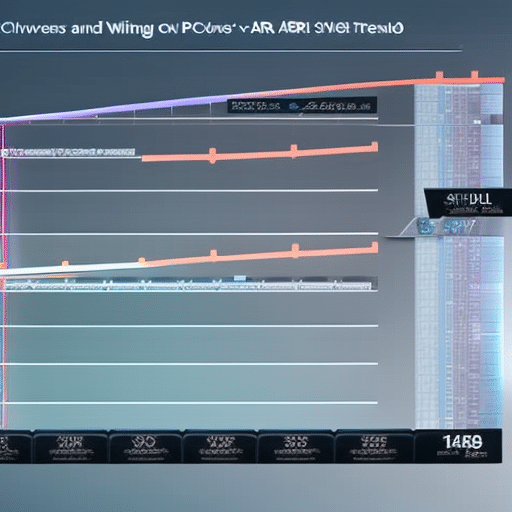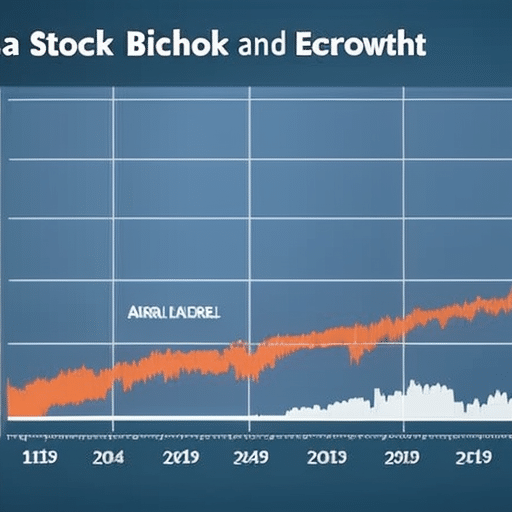
Altcoin Risk Assessment
Altcoin risk assessment is an important consideration for any person considering investing in cryptocurrency. This article will provide an overview of the various types of risks associated with altcoins and offer guidance on how to assess the potential risk in each case. The primary risks associated with altcoins are volatility, liquidity, regulatory risk, technology risk, fraud risk, reputational risk, development risk, investor sentiment risk, and scam risk. Each type of risk will be discussed in detail in order to provide a comprehensive understanding of the process of evaluating altcoin investments. Key Takeaways Currency trends and changing exchange rates have a significant impact on portfolios, and investors need to monitor and adjust their investments accordingly to avoid unexpected losses. Investment fraud in altcoins is a major concern, with reported losses of $1.7 billion in 2019. Investors should conduct due diligence to avoid falling victim to scams such as pump and dump schemes, Ponzi schemes, pyramid schemes, and exchange scams. Clear investment objectives are crucial in altcoin investments, taking into account factors like cost effectiveness and technology integration. Realistic goals should be set to minimize risks. Legal risks in altcoin investments are heightened due to the lack of regulations in the digital asset market. Investors should perform thorough legal risk assessments, consider consumer protection laws and tax implications, and ensure compliance with relevant regulations. Volatility The frequent and unpredictable fluctuations of altcoin prices are indicative of the volatility of the market. This high degree of unpredictability makes it difficult to gauge the long-term outlook for these digital assets, as any minor macroeconomic trend or news story can cause them to swing wildly in either direction. To mitigate this risk, investors should be aware of the current economic environment and pay attention to both short and long term trends when determining their trading strategies. Furthermore, they should also consider diversifying their portfolios with other asset classes that may not be affected by market volatility in order to reduce overall risk exposure. By doing so, investors can protect themselves from potential losses due to sudden price swings while still taking advantage of any potential gains. Liquidity is another important factor that needs to be taken into consideration when assessing altcoin risk. This refers to how quickly an asset can be sold or exchanged for cash without significantly impacting its value. Low liquidity means that there are few buyers or sellers available at any given time, making it difficult for investors to trade with confidence and execute profitable trades quickly. On the other hand, high liquidity implies a larger pool of buyers and sellers, allowing traders to enter or exit positions easily without incurring large losses due to slippage or lack of market depth. As such, altcoins with higher liquidity tend to have less volatile prices than those with lower liquidity levels. Liquidity Investigating the market liquidity of a particular cryptocurrency can reveal important information about its potential stability. Through value analysis and understanding the liquidity gap, investors can assess the risk associated with their investments. Liquidity is an important factor to consider when looking at any investment, as it provides insight into how easily an investor could move in and out of the asset position. A low liquidity suggests that it may be difficult for an investor to find buyers or sellers willing to trade at fair prices. This increases the risk associated with investing in cryptocurrencies since there is no assurance that one will be able to quickly buy or sell at a desired price. On the other hand, high liquidity indicates that an investor should have little difficulty entering and exiting positions in a timely manner without significant cost implications. As such, assessing market liquidity can provide valuable insights into how much risk one might face by investing in altcoins. A transition from this section on liquidity is regulatory risk which plays an important role when considering altcoin investments due to their largely unregulated nature. Regulatory Risk Analyzing the regulatory environment of cryptocurrencies can provide valuable insight into their potential stability. The taxation and legal implications of altcoins must be carefully considered, as they have significant consequences for both traders and investors. For example, depending on the country in which investors are based and any applicable tax regulations: 1) capital gains taxes could apply to profits from trading; 2) sometimes losses cannot be used against taxable income; 3) currency exchange fees may also need to be taken into account. Any financial losses incurred due to unclear or untested regulations should likewise be taken into consideration when assessing risk levels. Altcoin investments are often seen as highly speculative, with even experienced players potentially suffering substantial financial losses if regulatory requirements change unexpectedly or suddenly. As such, it is critical that individuals understand the legal risks they face before investing in altcoins. With this knowledge in hand, investors can then move onto considering other factors such as technology risk associated with altcoin investments. Technology Risk Exploring the technological aspects of cryptocurrencies can provide an understanding of their potential volatility. Cryptocurrency technology is complex and requires a significant amount of infrastructure, programming knowledge, and network security. The complexity of the decentralized system makes it difficult to know how secure transactions are and whether or not they will be maintained in the long-term. Network security is also an important factor, as malicious actors can target exchanges or individual wallets with malware or other attacks that could result in financial losses. As such, investors should assess the risks associated with crypto assets before investing in them due to their high-risk nature related to technological issues. Moving forward, this risk assessment should consider fraud risk as well as other factors. Fraud Risk Fraudulent activities that target cryptocurrency exchanges and wallets have the potential to cause financial losses, creating a need for careful consideration of the associated risks. In order to reduce fraud risk, altcoin projects should focus on developing effective scams detection methods such as reputation management. Additionally, altcoins should ensure proper authentication processes are in place for users who wish to open accounts with their platform or access their wallets. Furthermore, they should also implement secure payment methods that will minimize the risk of fraudulent transactions occurring. Finally, altcoin projects should strive to maintain strong customer service support teams that can help customers quickly identify and address any issues with their accounts or transactions. By taking these necessary steps to reduce fraud risk, altcoin projects can better protect themselves from malicious actors and make sure all users experience an optimal level of security when using their platforms. This is especially important given the volatile nature of the crypto market as it provides traders and investors with increased opportunities for profit but also exposes them to heightened risks. Transitioning into this next section then, it is essential to consider how market forces can also affect the success (or failure) of an altcoin project. Market Risk Fraud risk affects the trustworthiness of altcoins, but there is another risk to consider when investing in them: market risk. Market risk refers to the potential for losses due to fluctuations in an asset’s liquidity and volatility. A major source of this risk is price manipulation, where traders attempt to artificially inflate or deflate prices through various trading strategies. This can result in investors buying into (or selling out of) an altcoin at a much higher (or lower) price than expected. To avoid incurring large losses due to such market risks, investors must be vigilant and conduct thorough research before investing in any altcoin. Another aspect of this market risk is that it could be difficult for investors to exit their positions quickly if they need to do so due to changing circumstances. This could be especially true during periods of high volatility or low liquidity when there may not be enough buyers willing to take on the positions that are being sold off by other traders. Table 1 below summarizes some key points related to market risk associated with investing in altcoins: Risk Factors Impact Mitigation Strategies Price Manipulation Inaccurate pricing data leading to over-/under-valuation of assets Monitor markets closely; employ stop loss orders; diversify investments across different assets Liquidity & Volatility Fluctuations Difficulty exiting positions quickly during times of increased volatility or low liquidity Research coins thoroughly prior to investment; limit exposure by distributing investments across multiple assets Ultimately, understanding and mitigating these risks are essential for successful investment in altcoins, which can lead us naturally into considering currency risk as our next topic of discussion. Currency Risk Investing in altcoins entails taking on currency risk, which can pose significant challenges to investors. Currency risk is the potential loss of value due to fluctuating exchange rates between different currencies. As most altcoins are denominated in US dollars, investors need to be aware of currency trends and the impact that changing exchange rates may have on their portfolio. By monitoring these trends, investors can adjust their investments accordingly or take a more defensive approach if they perceive the market as too volatile. However, if changes in exchange rates cause losses beyond what was anticipated, this could result in a significant financial setback for an investor. Through careful consideration of currency risks and understanding how they might affect returns, investors can better manage their portfolios to mitigate potential losses from fluctuations in foreign markets. The next step is to look at the risk associated with investment fraud when investing in altcoins. Investment Fraud Investors should be aware that investment fraud is a growing problem when considering altcoins, with an estimated $1.7 billion in losses reported in 2019 alone. Fraudulent activities such as taxation fraud, insider trading and market manipulation can all lead to serious financial losses if not properly monitored. Common types of altcoin-related investment fraud include pump and dump schemes, Ponzi schemes, pyramid schemes and exchange scams. It is essential for investors to do their due diligence when investing in these coins to ensure they are not falling victim to fraudulent activities. Furthermore, understanding the risks associated with each type of altcoin investment and setting realistic investment objectives can help investors reduce their exposure to potential losses from fraudulent activity. Investment Objectives Having a clear set of investment objectives is essential for successful altcoin investments. Investment objectives should be realistic and achievable, and take into account factors such as cost effectiveness, technology integration, and the overall risk involved with the particular project. It is important to understand that in order to maximize returns from an altcoin investment, all associated risks must be taken into consideration. This includes both financial risks and legal risks associated with the project. When setting investment objectives for altcoin investments, it is important to understand how much risk one is willing to accept in exchange for potential rewards. Doing so will help ensure that investors are not taking on excessive risk while also helping them create realistic expectations for their portfolio’s performance. By having a well-defined set of investment objectives in place, investors can more easily identify projects that have a higher potential return without exposing themselves to too much risk or unnecessary losses. With this information at hand, investors can make informed decisions about their altcoin investments and move forward with confidence towards achieving their desired outcomes. As such, it is critical that investors invest time into formulating a clear set of investment objectives before committing any capital to an altcoin project; doing so will help minimize legal risk down the line and increase the chances for success when investing in these highly volatile assets. Legal Risk Due to the lack of regulations in the digital asset market, legal risk is an essential factor to consider when evaluating potential altcoin investments. Recent studies have shown that approximately 85% of investors do not perform a thorough legal risk assessment before investing in altcoins. One key component of considering legal risk is understanding consumer protection laws as they relate to these assets. Additionally, tax implications should also be considered when assessing this type of risk. In many countries, digital assets are still considered a novel asset class with unclear taxation regulations which can lead to both financial and criminal liabilities if not managed carefully. As such, it is imperative for investors to understand their local laws and ensure compliance before investing in altcoins. A comprehensive understanding of the legal environment associated with these investments can help protect investors from costly mistakes or violations of applicable laws. Transitioning into the next section about counterparty risk, it is important to recognize that trust between parties plays a large role in any kind of investment transaction involving digital assets. Counterparty Risk When investing in digital assets, it is essential to consider counterparty risk which is the potential that the other party involved in the transaction will fail to fulfill their obligations. The main factor that drives counterparty risk is exchange security as well as token security. Exchange security refers to whether or not an exchange has proper protocols and safeguards in place to protect user funds from theft or hacks. Token security, on the other hand, involves assessing the smart contract code of a given asset and evaluating its ability to secure users’ wallets and prevent malicious activities such as double-spending. Both of these factors are critical when considering counterparty risk and should be taken into account before making any investments. With this in mind, it is important to assess reputational risk associated with altcoins before investing. Reputational Risk Investing in digital assets requires consideration of reputational risk, which is like the ‘tip of the iceberg’ in terms of potential issues to be aware of. This type of risk is closely related to the information asymmetry between investors and developers, which can lead to speculative bubbles and other financial losses. Investors must conduct thorough research into the reputation and track record of any altcoin they are considering investing in before making a final decision, as even reputable projects may have flaws that could prove costly. Additionally, it is important for investors to stay up-to-date on any changes or developments that occur with an altcoin over time. By doing so, they can identify signs of potential instability or mismanagement early on and take appropriate action if needed. With this in mind, investors should also factor development risk into their risk assessment process when considering investments in altcoins. Development Risk Considering investments in digital assets requires an evaluation of development risk, which can be responsible for a variety of financial losses. Development risk is the potential for loss resulting from changes in the technical design or governance dynamics of an altcoin network. This can include any alterations to the underlying codebase that may have an adverse impact on network security and functionality. Moreover, it is important to consider how these changes might affect investor sentiment. As such, investors should evaluate the governance structure within any altcoin project prior to investing as well as stay up-to-date with any modifications made over time. To assess this risk effectively, it is critical to understand how decisions are made within a given project’s governing body and whether there are processes in place that mitigate against security vulnerabilities and other risks associated with changing codebase requirements. With this information in hand, investors can then better prepare themselves for understanding investor sentiment risk related to their investment decisions. Investor Sentiment Risk The development risk of altcoins is a primary concern for investors, but the sentiment of those same investors can also be a source of major uncertainty in the cryptocurrency world. Investor sentiment risk can take many forms, from fear of taxation strategies to speculation about exchange regulations. In order to understand this risk, it is important to examine how investor sentiment affects altcoin prices and market capitalization over time. Emotion Description Example Fear A feeling of worry or unease Fear of Taxation Strategies Speculation Forming an opinion without enough evidence Speculation about Exchange Regulations Understanding the emotions that drive investors’ decisions in the crypto market can help anticipate changes in price movements and overall capitalization levels. With this knowledge, investors may have an extra tool at their disposal when it comes to assessing their own level of risk with certain altcoins. The next step is to consider how potential scams might further complicate investor decision-making. Scam Risk Analyzing the prevalence of scams in the cryptocurrency world is essential for investors to accurately gauge their investment potential. Scams in the crypto world can take many forms, such as fraudulent initial coin offerings (ICOs), phishing and malware attacks, and counterfeit tokens. Although there are certain regulations put in place to protect investors, the lack of worldwide cryptocurrency regulation makes it difficult for law enforcement authorities to address these issues effectively. As such, investors must be aware of some common scam risks associated with cryptocurrencies before investing: Double-spending: In this type of scam, a malicious actor attempts to spend the same digital currency twice by manipulating its blockchain technology or using multiple accounts. Pump-and-dump schemes: These schemes involve fraudsters artificially inflating the price of a token through false hype and then selling off their holdings after they have reaped substantial profits from unsuspecting buyers who purchased at high prices. Token security breaches: To protect against unauthorized access to an investor’s wallet or account, proper security measures must be taken by both individual users and exchanges that handle large amounts of cryptocurrency tokens. This includes two-factor authentication, strong passwords, and other advanced security measures for token storage and transactions. Investors should also remain cautious when dealing with companies or organizations offering investment opportunities related to cryptocurrency tokens due to possible fraudulent activities involving unregistered securities or misleading information about future returns on investments. By being vigilant about assessing risk factors associated with investing in crypto projects, investors can ensure they make sound decisions when considering whether or not to invest in altcoins. Frequently Asked Questions What is the best way to diversify my altcoin investments? When investing in altcoins, diversification strategies are key. To reduce risk, investors should consider liquidity of the assets and create a diversified portfolio that includes different types of coins. This will help spread out risk and increase potential return. What are the tax implications of trading altcoins? Satire aside, trading altcoins can have significant tax implications. Tax strategies should be tailored to individual gains, such as capital gains taxes on profits from cryptocurrency investments. Understanding the various regulations is key for a successful and tax-efficient strategy. How do I protect myself from market manipulation? Market manipulation can create increased price volatility and security risks. To protect oneself, it is important to closely monitor market trends and develop a comprehensive understanding of the associated risks. Additionally, diversifying investments may also help reduce potential losses. What are the potential long-term returns of altcoin investments? Price forecasting and technical analysis can provide insight into potential long-term returns of altcoin investments, but no predictions can be made with certainty. Factors such as market volatility, liquidity, and demand must be considered when assessing investment risks. Are there any altcoins that have been proven to be reliable investments? Investors must assess their risk appetite when considering investing in altcoins, as reliable investments can be hard to come by. One example is a crypto-asset that experienced an impressive return on investment after its fundamental analysis revealed a strong underlying value. Such cases are rare, but investors must use sound fundamental analysis to identify reliable altcoin







